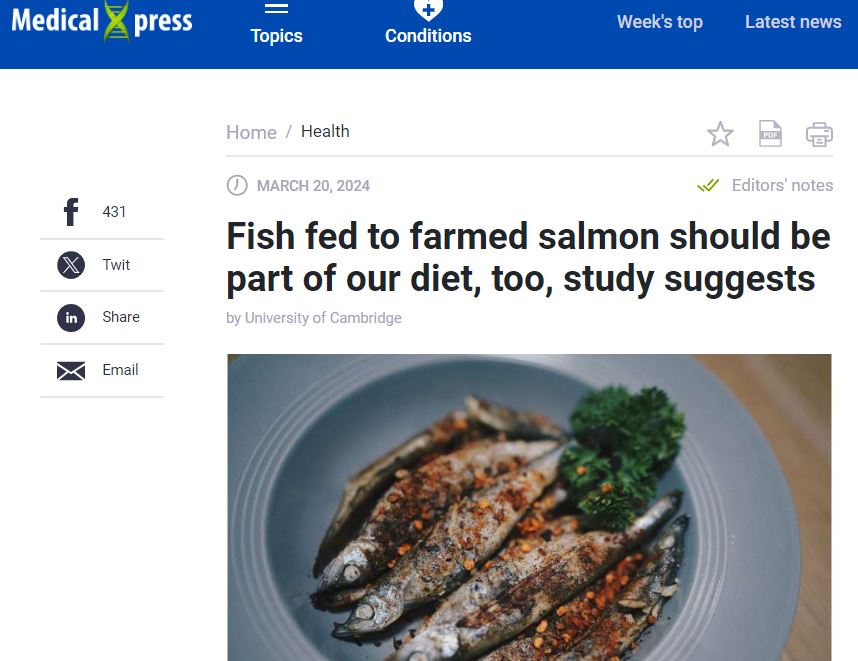 Til að framleiða eina máltíð af eldislaxi þarf prótein og næringarefni sem myndu duga í þrjár til fjórar máltíðir fyrir fólk.
Til að framleiða eina máltíð af eldislaxi þarf prótein og næringarefni sem myndu duga í þrjár til fjórar máltíðir fyrir fólk.
Þetta er fáránleg nýting á hráefni.
Rannsóknin birtist í Nature Food.
Fjallað er um rannsóknina og matvælasóunina sem sjókvíaeldið er grundvallað á í vefmiðlinum Medical Xpress :
… In new research, scientists have found that farmed salmon production leads to an overall loss of essential dietary nutrients. They say that eating more wild feed species directly could benefit our health while reducing aquaculture demand for finite marine resources. …
Researchers analyzed the flow of nutrients from the edible species of wild fish used as feed, to the farmed salmon to which they were fed. They found a decrease in six out of nine nutrients in the salmon filet—calcium, iodine, iron, omega-3, vitamin B12 and vitamin A, but increased levels of selenium and zinc.
However, most wild feed fish met dietary nutrient recommendations at smaller portion sizes than farmed Atlantic salmon, including omega-3 fatty acids, which are known to reduce the risk of cardiovascular disease and stroke.
„What we’re seeing is that most species of wild fish used as feed have a similar or greater density and range of micronutrients than farmed salmon filets,“ said lead author, Dr. David Willer, Zoology Department, University of Cambridge. „While still enjoying eating salmon and supporting sustainable growth in the sector, people should consider eating a greater and wider variety of wild fish species like sardines, mackerel and anchovies, to get more essential nutrients straight to their plate.“
In the UK, 71% of adults have insufficient vitamin D in winter, and teenage girls and women often have deficiencies of iodine, selenium and iron. Yet while, 24% of adults ate salmon weekly, only 5.4% ate mackerel, 1% anchovies and just 0.4% herring.
…
The researchers found consuming one-third of current food-grade wild feed fish directly would be the most efficient way of maximizing nutrients from the sea.
…
The scientists calculated the balance of nutrients in edible portions of whole wild fish, used within pelleted salmon feed in Norway, compared to the farmed salmon filets. They focused on nine nutrients that are essential in human diets and concentrated in seafood—iodine, calcium, iron, vitamin B12, vitamin A, omega-3 (EPA + DHA), vitamin D, zinc and selenium.
The wild fish studied included Pacific and Peruvian anchoveta, and Atlantic herring, mackerel, sprat and blue whiting—which are all marketed and consumed as seafood.
The team found that these six feed species contained a greater, or similar, concentration of nutrients as the farmed salmon filets. Quantities of calcium were over five times higher in wild feed fish filets than salmon filets, iodine was four times higher, and iron, omega-3, vitamin B12, and vitamin A were over 1.5 times higher.
Wild feed species and salmon had comparable quantities of vitamin D.
Zinc and selenium were found to be higher in salmon than the wild feed species; the researchers say these extra quantities are due to other salmon feed ingredients and are a real mark of progress in the salmon sector.
